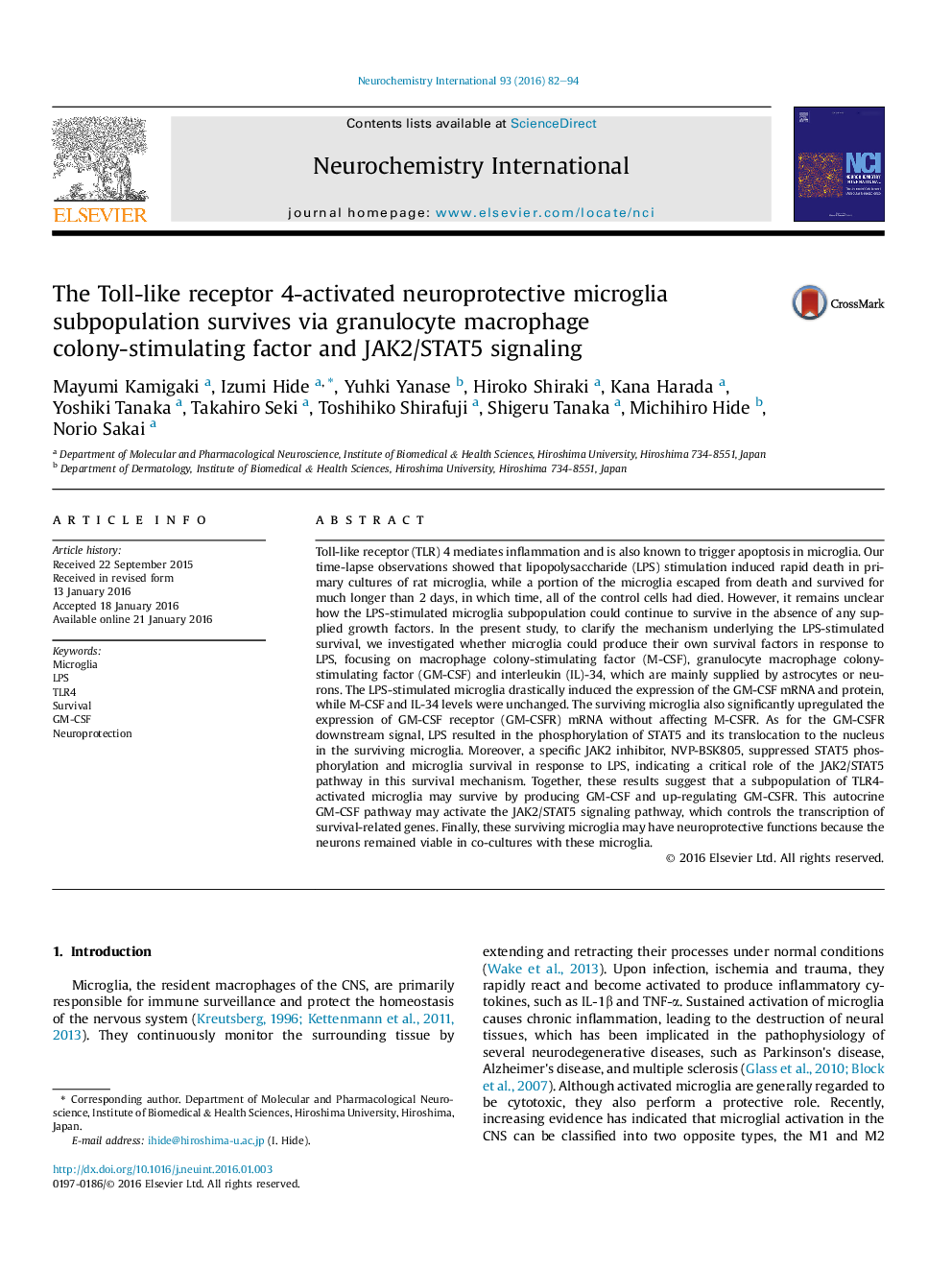| کد مقاله | کد نشریه | سال انتشار | مقاله انگلیسی | نسخه تمام متن |
|---|---|---|---|---|
| 2200342 | 1551282 | 2016 | 13 صفحه PDF | دانلود رایگان |

• LPS induces rapid death and long-term survival in rat primary microglia via TLR4.
• The surviving LPS-stimulated microglia produce GM-CSF.
• LPS also upregulates the GM-CSF receptor and drives the JAK2/STAT5 pathway.
• The surviving LPS-stimulated microglia protect neurons in a co-culture system.
Toll-like receptor (TLR) 4 mediates inflammation and is also known to trigger apoptosis in microglia. Our time-lapse observations showed that lipopolysaccharide (LPS) stimulation induced rapid death in primary cultures of rat microglia, while a portion of the microglia escaped from death and survived for much longer than 2 days, in which time, all of the control cells had died. However, it remains unclear how the LPS-stimulated microglia subpopulation could continue to survive in the absence of any supplied growth factors. In the present study, to clarify the mechanism underlying the LPS-stimulated survival, we investigated whether microglia could produce their own survival factors in response to LPS, focusing on macrophage colony-stimulating factor (M-CSF), granulocyte macrophage colony-stimulating factor (GM-CSF) and interleukin (IL)-34, which are mainly supplied by astrocytes or neurons. The LPS-stimulated microglia drastically induced the expression of the GM-CSF mRNA and protein, while M-CSF and IL-34 levels were unchanged. The surviving microglia also significantly upregulated the expression of GM-CSF receptor (GM-CSFR) mRNA without affecting M-CSFR. As for the GM-CSFR downstream signal, LPS resulted in the phosphorylation of STAT5 and its translocation to the nucleus in the surviving microglia. Moreover, a specific JAK2 inhibitor, NVP-BSK805, suppressed STAT5 phosphorylation and microglia survival in response to LPS, indicating a critical role of the JAK2/STAT5 pathway in this survival mechanism. Together, these results suggest that a subpopulation of TLR4-activated microglia may survive by producing GM-CSF and up-regulating GM-CSFR. This autocrine GM-CSF pathway may activate the JAK2/STAT5 signaling pathway, which controls the transcription of survival-related genes. Finally, these surviving microglia may have neuroprotective functions because the neurons remained viable in co-cultures with these microglia.
Journal: Neurochemistry International - Volume 93, February 2016, Pages 82–94